How To Create A Stunning Personalized Shopping Bag in 5 Easy Steps
Have you customized your store's presence lately? Personalized shopping bags are a great way to get your brand and store recognized.
Unfortunately, a lot of small business owners and independent retailers are still using plain old kraft or white paper bags or they're using plastic bags from a big box store that have "THANK YOU" printed in big blue letters on the side.
Plain bags are all well and good, but using a plain bag can also be a missed opportunity.
Making The Case For Custom

Note: The next few paragraphs detail some of the reasons why a personalized shopping bag can help your business grow. But if you're already sold on the idea and just want to know HOW to get it done, you can download our Shopping Bag Cheat Sheet.
Each of these steps are outlined in more detail the last half of this article.
Anyways...I used to work in a sporting goods/footwear store called Schnee's in Bozeman, MT. (Great store, by the way). We would often get sales reps coming in to show us the newest product lines in footwear and clothing so that we could decide what new products to purchase.
When I first started, I was new at this whole process. But I learned one thing very quickly: Customers do not like buying products that have **YOUR BRAND** splashed all over them. A little logo here or there was fine, but a huge brand tagline or company monogram pasted in the middle of the clothing design did not work AT ALL.
So what does this have to do with custom shopping bags?
Customers Don't Mind Branding When It's On Their Shopping Bag
I learned very quickly in that environment that customers would rather avoid having a company logo or brand on their product if they can help it. But they DON'T mind having it on their shopping bags!
This make sense, right? You don't want to be an obnoxious walking billboard for a company every time you use the product.
But, if you make a purchase from Nordstrom or Macy's or Nike, there's no problem walking out into the parking lot with a shopping bag that has a custom logo on it. You might even be happy if someone took notice that you bought something from that store.

This becomes even more important for the independent retailer. Macy's and Nordstrom have a good reputation, and most people would already recognize the name if they saw it on a shopping bag. But a small boutique or local gift shop doesn't usually have the same exposure.
Someone who sees that shopping bag while your customer is on the way to their car, or doing more shopping around town is much more likely to have never heard of your shop before. If you live in a tourist spot or near an airport, the chances of this increase dramatically.
Even if they are from that area, they might not have ever visited your location. That shopping bag could be the mental spark that reminds them to shop for their Uncle Barry or little Johnny.
Not only that, imagine if two people from the same area meet on the sidewalk outside your shop. If one of them is holding your custom shopping bag in their hands, what are the odds that your store comes up in their conversation? Pretty decent.
So those are just a few of the reasons for creating a custom shopping bag for your store.
But wait... isn't creating a personalized custom bag HARD?
This is usually where a lot of people abandon the idea altogether. Sure, it sounds great to personalize my store's shopping bags, but it also sounds like a lot of time, effort and work. Plus, isn't it expensive?
It's a shame that people jump off the bandwagon at this point, because advancements in technology, shipping and availability have come a long way in the last 20 or 30 years. It CAN be absolutely frustrating to create your own shopping bags, but it doesn't HAVE to be.
Spoiler alert: I'll walk you through the whole process, but I actually recommend doing all this with a product expert from the beginning. It usually doesn't cost you anything extra and can save you a lot of headaches in the future. See here for one of the best in the business at helping you with custom bags.
The System: 5 Easy Steps To The Shopping Bag Of Your Dreams
OK, maybe that title is a bit overblown. No one dreams about shopping bags. But it can be relatively simple to design and create your own custom shopping bags.
Step 1: Determine Your Quantity
This is an often overlooked detail. Many people wait until the last step to determine how many bags they want to order, but deciding at the beginning how many bags you want to order sets up the whole process. This is because you have two main options when ordering: you can order overseas, or you can do what is called "post-printing". If you need a lot of bags (10,000-25,000) and have 10-13 weeks before you need them, you can order through a distributor and get a custom run of bags made overseas. This is known as a "overseas printing". This is ideal, because you can set up almost any kind of specifications you need and it's usually cheaper.
If you are ordering a smaller quantity of bags, then most people will post-print on bags that are already stocked domestically. Post printing is printing or stamping the artwork onto a plain bag. See below for more information about both processes.
Mill Run
This method is generally used for large orders, multiple colors, and tight registration. You can print on almost any part of the bag top, bottom, and gussets with as many colors as you like.
Advantages of Mill Run:
• Larger quantity of bags means cheaper price per bag
• Multiple colors of ink
• Printing on the top/bottom and in the gussets
• More options available
Post Printing
Hot Stamping- Foil
A metal plate is inserted into a press. Through heat, the image on the plate is transferred from a roll of foil onto the product being stamped. The process is used by many manufacturers for gift boxes, labels and bags. The cost of the plates is relatively low and the quality of the stamp is excellent. This is also popular for short runs.
Advantages of Hot-Stamping:
• High quality print
• Used on just about any printable surface
• Popular for short runs
• Logo really pops
Print- Ink
Literally means printing after the bags are made. You cannot print near the handles, top/bottom or the side gussets because it interferes with the print area of the shopping bag. The unobstructed area is known as the sweet spot.
Advantages of Post Printing:
• Uses fast drying inks
• Resilient rubber printing cylinders that will print millions of impressions.
• Usually the cheaper method of printing
• Looks natural
Step 2: Pick The Type of Bag
There are many different types of shopping bags and most of them can be customized. Some important considerations are lead time, minimums and material type.
Lead time is the time is takes for a certain bag to be manufactured and/or post-printed and delivered to you. This will vary based on the type of bag you choose.
Minimums are just what they sound like: a minimum order for that bag type. A lot of minimums start around 500-1000 bags, but your pricing will get better the more you order.
Common material types for shopping bags are:
- Plastic
- Paper
- Non-Woven (a soft fabric material)
Each of these can have variations. Let's take them one at a time...
Plastic Bags
You can have a clear plastic bag, colored plastic bag or a frosted plastic bag. Plastic bags also come in various thicknesses that are measured in "mils". A lot of cities have local bag ordinances that are designed to reduce waste. These may require you to purchase a certain thickness of plastic bag. A common one that we hear a lot is "2.25 mil and above".
Of course, this varies by region, so you'll want to check your local bag ordinances to see what your city requires. One of the best things to do is to Google "bag ordinance (my city name)". this should pull up some news articles or a city website that you can use.
Paper Bags

Plain white and kraft bags are the most popular. You see a lot of these in grocery stores or little markets. These also come in different thicknesses and are measured by something known as "GSM". This stands for "Grams per Square Meter" and gives you an idea of the quality of the paper. The higher the number, the better the paper.
You can also get laminated (sometimes known as European Tote Style) or flood coated paper bags. These can add a nice layer of color or style to an otherwise plain paper bag.
Non Woven Bags
These bags are made of polypropylene and are definitely in style right now. They kind of feel like a soft, heavy fabric and come in different colors. Especially useful for heavy items or if you want to be eco-friendly and want your customers to re-use their bag over and over. Some are even machine washable!
Step 3: Decide the Size and Type of Handle
Size
Bags come in every size and shape imaginable. To further complicate matters, you can custom order bags in just about any size imaginable. But don't worry, bag manufacturers and distributors typically stock common bag sizes. If you are just starting out, it's probably best to go with one of these standard sizes.
For paper bags, some common sizes are referred to as Cub (8" x 4 3/4" x 10 1/2"), Gem (5 1/4" x 3 1/4" x 8 3/8"), Missy (10" x 5" x 13 1/2") and Queen (16" x 6" x 19 1/4"). You can also get small merchandise bags as well.
For plastic bags, some common sizes are 9" x 12", 12" x 15", and 15" x 18".
For non-woven bags, some common sizes are 12" x 8" x 13" x 8" and 13" x 10" x 15" x 10"
Handle Type
This may seem kind of silly, but it's actually an important consideration. The type of handle that you choose can dramatically affect how much you can put in your bag, the print area of the bag and more. Here are some pictures of common bag handle types:
Die Cut

Twisted Rope

Loop

These are just a few of the standard options. Most of the time, when you choose your bag type, there will be a standard handle option that you can choose as well.
Step 4: Decide the Color of the Bag and Your Artwork
Now for the fun part. Once you have your bag type and size selected, you now can start the creative process.
For a lot of people, just putting their existing logo on the bag is perfect. But you need to know what colors you are working with to make sure the process goes smoothly.
First, experiment with the color that you want the bag to be. Most of the time, people decide to leave the bag the color that it is or to have one solid color flood coated on the bag.








Bags come in just about every color imaginable. Certain common colors will usually be in stock, while others may require a plain white or brown bag to be flood coated.
Flood coating is just taking a plain bag and spraying a color over the entire outside surface.
PRO TIP: For some great ideas on colors, there is no better site for variety and quality than www.pantone.com.
Once you have that decided, you can start to work with your artwork. For most people, their logo is all they want (and need) displayed. In general, the more complicated your design and colors, the more pricey the printing will be. Usually each color has to be printed separately. You can do up to four individual colors, or if you want a realistic photo look, you can try 4 color process.
Important: Most artwork needs to be in vector format. This is artwork that can be resized without being "pixelated" or fuzzy. Most of the time, this will be done in Adobe Illustrator and have a file extension of ".ai".
If you don't have artwork prepared, you can usually have someone create it for you without too much trouble. A lot of custom bag providers will work with a graphic artist who creates these art files on a regular basis. If you don't have something fully prepared, a graphic artist can go a LONG way in helping you get a design you absolutely love.
Step 5: Order Them!
Congratulations! You've picked out what bags you want, the size and handle type, the color and provided your artwork. You're ready to go!
Well... almost.
This can be the spot where things get tricky. You really want to make sure that you work with someone you trust at this point. Just like with anything, there are good manufacturers and bad manufacturers out there. If you work with a company that sources their bags from a company that does shoddy manufacturing or bad printing, you'll be suffering for a long time with bad bags, or trying to get refund or re-order.
A good sales rep from a reputable company can also find you the best pricing and offer really helpful suggestions on bag minimums and lead times.
Depending on what you have selected, there may be hidden fees or shipping charges.

So how are you supposed to keep all this straight?
The best course of action is to start consulting an expert in custom bags from the start.
You can usually brainstorm with them to come up with great ideas and then they can do all the legwork to find out minimums, color options, lead times and more.
They'll also have all the connections to be able to get you the best deal without sacrificing quality.
You can certainly try to source the bags on your own, but most manufacturers and post-printers work with distributors instead of selling directly to a consumer (yes, they would even consider a lot of small businesses to be a consumer).
Shameless plug: American Retail Supply is a company that specializes in helping businesses create custom bags. They have a full staff of product experts that will work with you throughout the entire process. Click here to view their website.
P.S. Another big consideration is WHO you will work with when getting your custom bags printed. Once you have a custom plate for artwork, it can be expensive to switch vendors when you want to re-order your bags.
If you make a good choice of who you work with at the beginning of your custom shopping bag journey, it can pay off in a big way down the road.
If you ever have any questions about this process or if we can answer questions in any way, please email us at [email protected].
Shopping Bag Cheat Sheet

Examples of some custom shopping bags:






























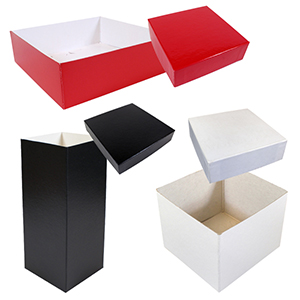
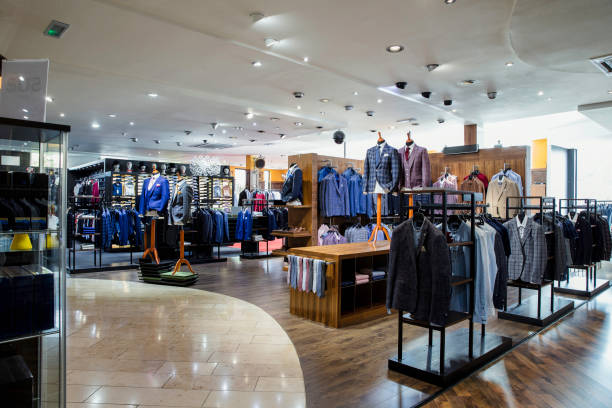
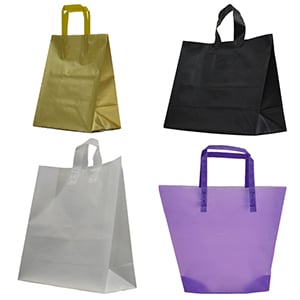
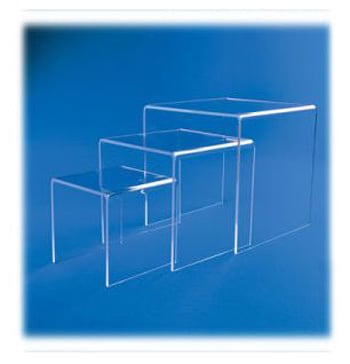
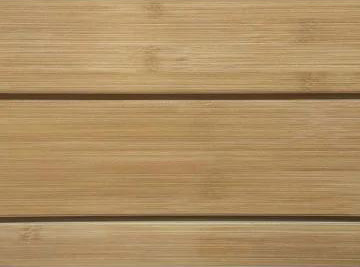

Validate your login